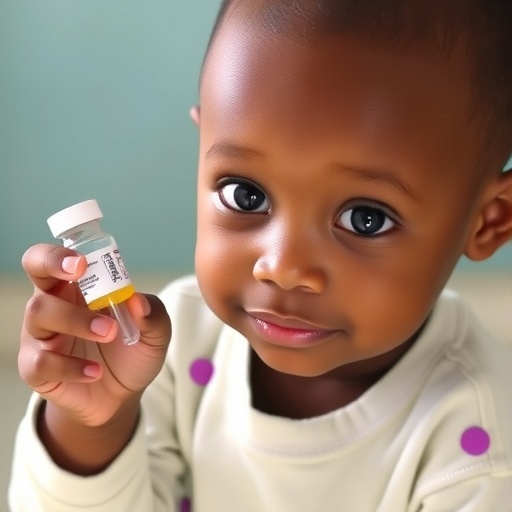Food scientist awarded two USDA grants to study better ways to identify pathogens

Credit: UMass Amherst
University of Massachusetts Amherst food scientist Matthew Moore has received two grants from the USDA to apply new technology in an effort to more quickly detect and trace foodborne disease caused by noroviruses and bacteria.
Under the USDA’s Agriculture and Food Research Initiative, Moore and Min Chen, a UMass Amherst associate professor of chemistry, received a $490,000 grant to develop and evaluate a portable sensing device capable of both identifying and subtyping foodborne pathogens, including bacteria and viruses.
“Human noroviruses and Salmonella enterica are the leading causes of foodborne illness and foodborne death in the United States, respectively,” Moore says. “One of the major elements to control these pathogens is the ability to rapidly and portably detect them. Dr. Chen has developed an extremely promising sensing platform that has shown great results for clinical applications, and we hope to translate that progress to pathogenic microorganisms.”
In addition, breaking down the pathogens into “subtypes” is crucial to quickly identifying outbreaks and the food or ingredient responsible for them. Portable detection methods that are quick have lacked the ability to subtype, Moore explains. And existing methods for subtyping pathogens take time, giving outbreaks a chance to grow and spread before they are identified.
The UMass Amherst researchers seek to apply this sensing/subtyping platform for foodborne pathogens in the field since the technology developed by Chen has the potential to be used with a smartphone. Moore and Chen plan to develop the sensor platform to create portable technology capable of both detecting and subtyping human norovirus and Salmonella enterica in less than an hour.
“Both of these pathogens have many diverse subtypes for which a technology like this would be extremely valuable,” Moore says.
In related research funded under the USDA’s Improving Food Safety Program, Moore and University of Florida food microbiologist Melissa Jones were awarded a $250,000 grant to use a new and potentially more effective way to concentrate and identify human noroviruses from food and environmental samples.
“One of the major roadblocks in reducing transmission of human noroviruses is the difficulty of specifically concentrating them prior to detecting them in foods,” explains Moore, who will test the use of non-pathogenic bacteria to detect the virus.
Moore explains that while bacteria can be increased in a sample for better detection by incubating them in nutritious media to grow, this doesn’t work with viruses, which need host cells to infect in order to grow in number.
Viruses therefore must be concentrated from food and environmental samples to be more easily detected. The existing methods to do this use magnetic beads, which have molecules that bind and recognize virus, but this approach is expensive and not very efficient or effective.
Moore and colleagues will try out a new method by testing the ability of non-pathogenic bacteria, instead of magnetic beads, to concentrate viruses. This approach has a major advantage, he says, because bacteria can be grown easily to the amount needed in a very cheap manner.
“Some bacteria have been demonstrated to naturally bind human noroviruses,” Moore says. “Our group is investigating the ability of these bacteria to concentrate noroviruses from samples.”
Moore’s lab also will investigate the ability of harmless strains of E. coli that have been engineered to specifically bind noroviruses to concentrate them from samples. This approach has the advantage of being more easily controlled and consistent than relying on wild-type bacteria, whose behavior can be slightly less predictable in certain growth conditions, Moore says.
“Both of these projects have potential to be quite valuable in controlling foodborne illness, and I am grateful for the opportunity that both USDA programs have given us to work on them,” Moore says. “Both Min and Melissa are amazing scientists and people, and I’m excited to work with them and develop tools to help reduce foodborne illness.”
###
Media Contact
Patty Shillington
[email protected]
305-606-9909
Original Source
https:/






